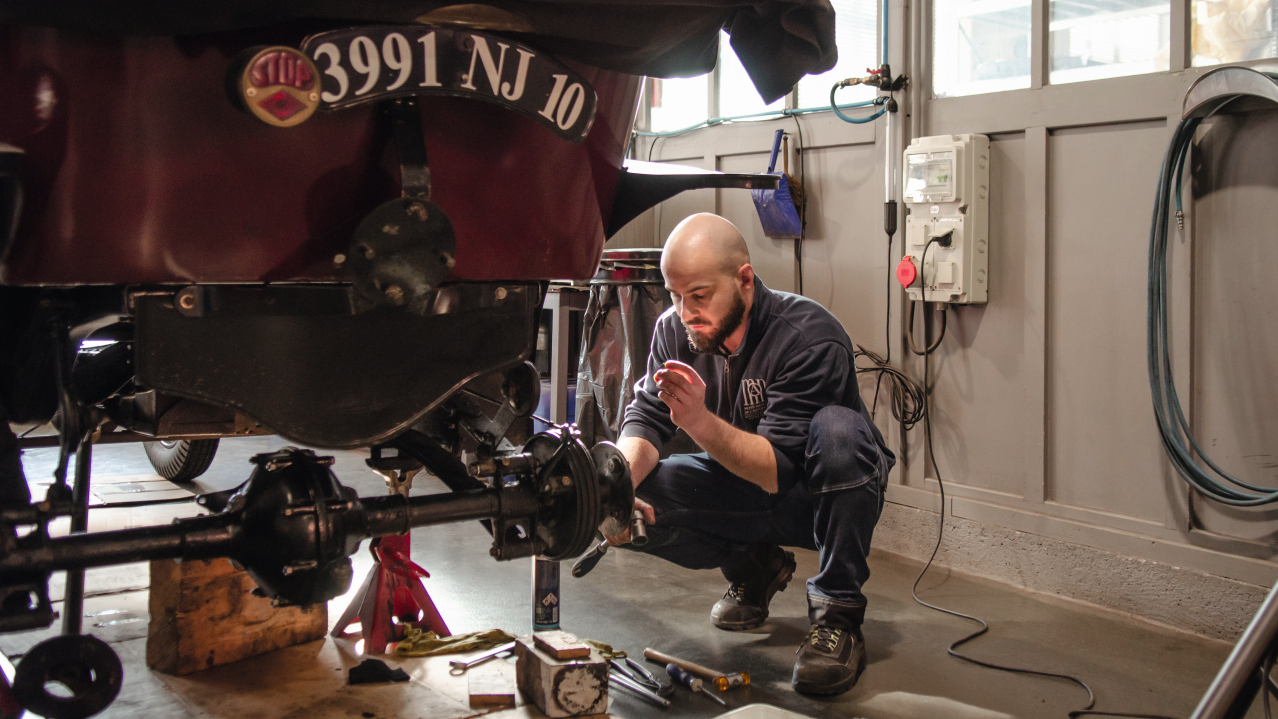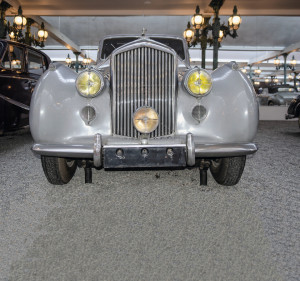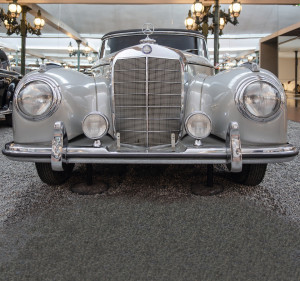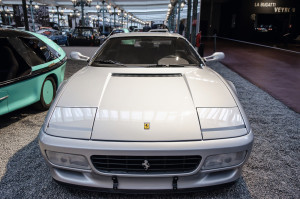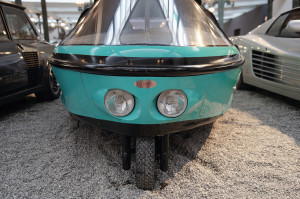With a collection of 600 classic cars, the Musée National de l'Automobile in Mulhouse, Alsace, claims to be the largest automobile museum in the world. The story of its origins reads like a detective story.
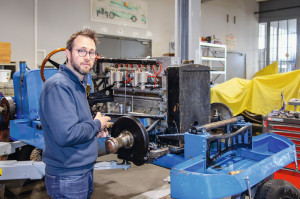 The head of restoration, Brice Chalançon, is working on a Bugatti racing car nicknamed "Tank "The saying "He who greases well, drives well", which has been known since the beginning of the 18th century, does not necessarily apply literally to oiling and greasing in vehicle construction and the transport industry. Nevertheless, the Musée National de l'Automobil does just that and regularly gives 600 classic cars, some of which are unimaginably valuable, a well-earned lick of grease. The museum employs five specially trained employees in its restoration department to do this (and much more, of course). The head of the department is engineer Brice Chalançon, who first studied energy technology in Orléans near Paris and later completed an additional degree in conservation/restoration at the Haute Ecole Arc in Neuchâtel, Switzerland.
The head of restoration, Brice Chalançon, is working on a Bugatti racing car nicknamed "Tank "The saying "He who greases well, drives well", which has been known since the beginning of the 18th century, does not necessarily apply literally to oiling and greasing in vehicle construction and the transport industry. Nevertheless, the Musée National de l'Automobil does just that and regularly gives 600 classic cars, some of which are unimaginably valuable, a well-earned lick of grease. The museum employs five specially trained employees in its restoration department to do this (and much more, of course). The head of the department is engineer Brice Chalançon, who first studied energy technology in Orléans near Paris and later completed an additional degree in conservation/restoration at the Haute Ecole Arc in Neuchâtel, Switzerland.
"My group is responsible for the maintenance of all of our 600 cars - both the care and the technical maintenance," he says, outlining his job. Chalançon also reveals that really major repairs only occur once every five years on average.
In this respect, it is currently a busy time. A Bugatti 32 "Tank", a Citroën B2 and a Bugatti Royale Esders have been dismantled down to the chassis in the spacious, bright workshop. "The Royale is something of a star here at the moment," smiles Chalançon. "When our press department announced that we were going to work on this car, there was a hail of media inquiries. Even French television was here to report."
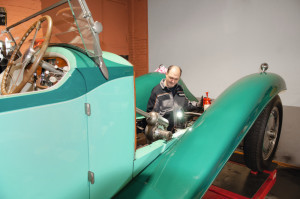 The current star in the workshop is the Bugatti Royal Esders. The roadster was placed on a newly manufactured chassis, the eight-cylinder engine with 300 hp is currently being completely dismantledInfact, the Bugatti Royale is something very special. The company's internal designation was the technically sober Type 41. Initial planning for the model began in 1919. Ettore Bugatti had the idea of a luxury model that would play in the league of other premium vehicles such as Rolls Royce, Mercedes Benz, Cadillac or Maybach. Ettore defined the European royal families, aristocrats and major industrialists as the target group. For this reason, the Type 41 was soon given the sales name Royale. Ettore placed the construction and design in the hands of his son Jean. But it was not until 1926 that the planning was completed and the first chassis of this series was built, the 41-111. The Bugattis estimated a realistic sales figure of around 30 units. In the end, six were built. The first model, which was completed in 1928, was a racing car. The first road model went to the French industrialist Armand Esders. The looming global economic crisis prevented even Königs and other well-heeled customers from buying such an expensive car.
The current star in the workshop is the Bugatti Royal Esders. The roadster was placed on a newly manufactured chassis, the eight-cylinder engine with 300 hp is currently being completely dismantledInfact, the Bugatti Royale is something very special. The company's internal designation was the technically sober Type 41. Initial planning for the model began in 1919. Ettore Bugatti had the idea of a luxury model that would play in the league of other premium vehicles such as Rolls Royce, Mercedes Benz, Cadillac or Maybach. Ettore defined the European royal families, aristocrats and major industrialists as the target group. For this reason, the Type 41 was soon given the sales name Royale. Ettore placed the construction and design in the hands of his son Jean. But it was not until 1926 that the planning was completed and the first chassis of this series was built, the 41-111. The Bugattis estimated a realistic sales figure of around 30 units. In the end, six were built. The first model, which was completed in 1928, was a racing car. The first road model went to the French industrialist Armand Esders. The looming global economic crisis prevented even Königs and other well-heeled customers from buying such an expensive car.
The Royale Esders (named after the first buyer of a Bugatti Royale), which is currently undergoing restoration in Mulhouse, is a roadster. It is not called Bugatti Royale Esders by the museum staff, but simply Royale Esders. This is due to the fact that the car was not assembled by Bugatti, but only exists in individual parts. Moreover, these individual parts are incomplete. For example, the complete chassis was missing and had been lost.
At this point, a company stepped into the breach that one would not necessarily have expected: Alstom, the manufacturer of the French TGV high-speed train. The plans for the Type 41 still exist there, and the locomotive manufacturer quickly donated a frame to the automobile museum, custom-made according to the old specifications. It should be noted that although only six of the Royale were built instead of the planned 30, the model was not an absolute flop. This was due to its engine, a 300 hp eight-cylinder in-line monster. With this power, the engine was also suitable for use in the railcars that Bugatti built for the French railroads at the time. In this context, one of these Bugatti railcars still exists and is even ready for use. It is only a few hundred meters away from the car museum - in the Mülhausen Railway Museum.
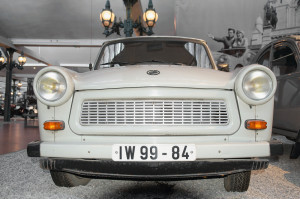 Trabant
Trabant
What the Beetle was to the Wessi, the Trabbi was to the Ossi. The transverse two-stroke engine with front-wheel drive and the body made of Duroplast were technical masterpieces in the 1950s. The 601 model became a symbol of political change in the GDR
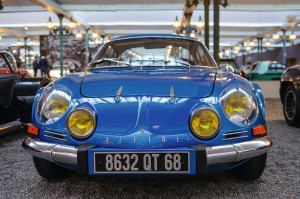 (Renault) Alpine A110
(Renault) Alpine A110
Alpine (Dieppe, Normandy), initially an independent sports car manufacturer, was taken over by Renault in 1973. The Alpine A110 (loud, hard, fast) was a dominant vehicle in racing until the 1970s
The Citroën B2, which stands somewhat apart from the two Bugatti models, exudes considerably less glamor. Chalançon: "The B2 here is undergoing a general overhaul, including a rebuild of the engine. The second cylinder is not working, which means we are completely dismantling the engine." The Citroën B2 was one of the first cars to be built in really large numbers. Almost 90000 units left the factory in the 15th arrondissement of Paris, Quai de Javel, in the 1920s. The B2 was available as a saloon, a convertible, a sports car and a platform truck. It had a four-cylinder in-line engine that produced 20 hp and accelerated the car to a good 70 km/h.
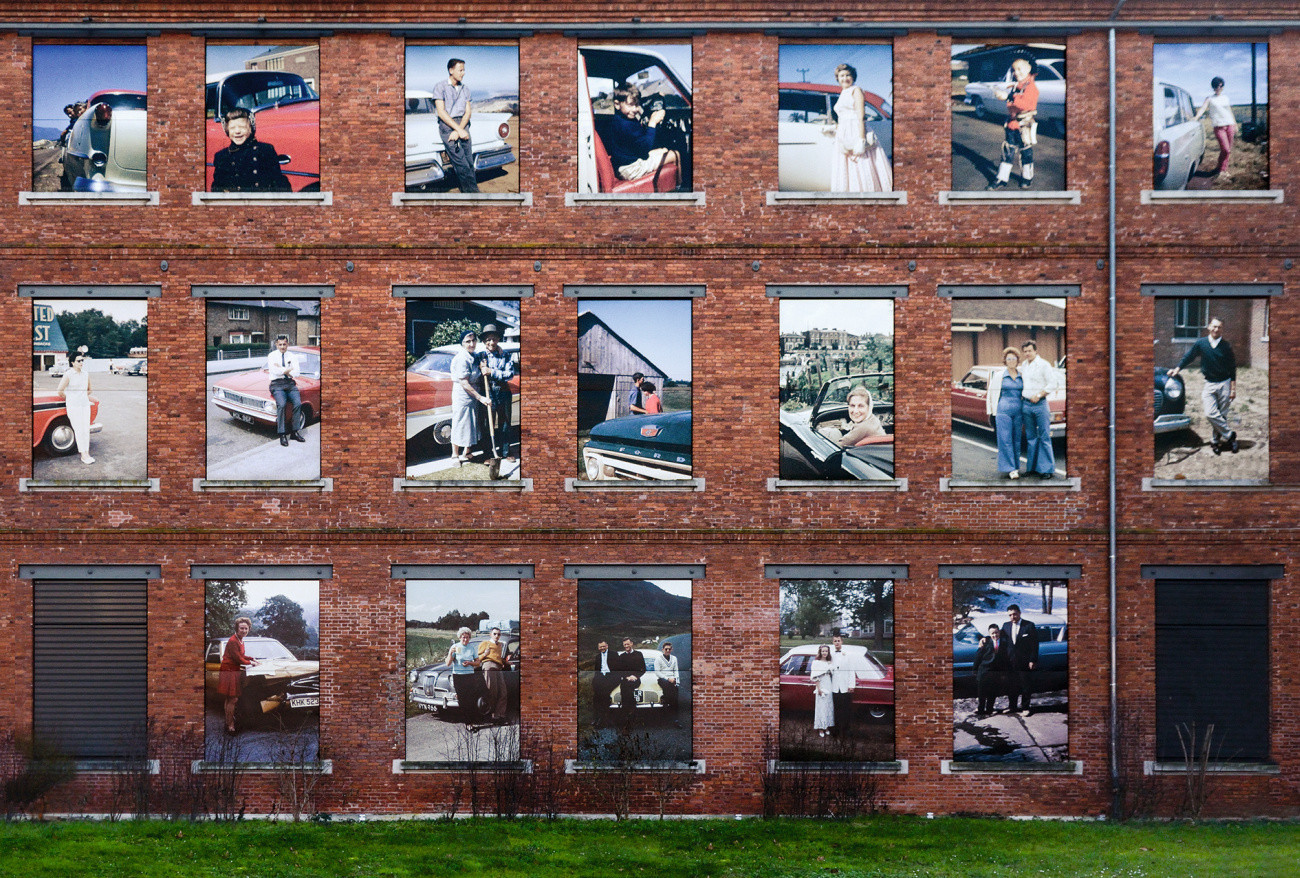 The man and his car. These photos, mainly from America, adorn the rear facade of the museum
The man and his car. These photos, mainly from America, adorn the rear facade of the museum
Finally, the Bugatti 32 "Tank" undergoes a general overhaul and, with its engine intact, the racing car will later be ready to drive again. Incidentally, the racer was nicknamed "Tank" because its streamlined bodywork is vaguely reminiscent of the early tanks of the First World War. The Bugatti 32 "Tank" was one of the very first cars whose bodywork was shaped according to aerodynamic criteria, which raises the question of the general roadworthiness of the individual exhibits. Brice Chalançon: "Of the 600 cars we have, 50 are roadworthy. Of course, it's always a question of how much effort it takes to completely restore a car. Above all, it's a question of money."
Donations in kind expand the collection
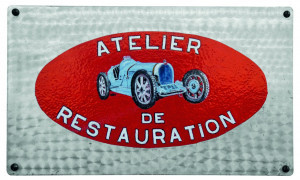 The museum itself has a certain basic amount at its disposal. A committee decides on expenditure that goes beyond this. Its members are based in Strasbourg and Paris. However, money is not the only decisive factor in determining the extent to which a model is restored. In cases of doubt, a technically sophisticated, original or even rare solution for a component on the car is given preference over an ordinary solution, even if the latter is ultimately more expensive.
The museum itself has a certain basic amount at its disposal. A committee decides on expenditure that goes beyond this. Its members are based in Strasbourg and Paris. However, money is not the only decisive factor in determining the extent to which a model is restored. In cases of doubt, a technically sophisticated, original or even rare solution for a component on the car is given preference over an ordinary solution, even if the latter is ultimately more expensive.
Nevertheless: "We have no money for our own acquisitions," complains Chalaçon. "We are still dependent on donations in kind from benefactors." What is needed are cars, largely in their original condition and in a reasonably good state of preservation. "The days when we took ruins and completely restored them are over."
The Atelier de Restauration only carries out technical work. Everything cosmetic is outsourced. For example, they work with a paint shop in Strasbourg that specializes in applying old paintwork. In any case, a paint sample is taken from every car that ends up in the museum and stored in a special paint archive. But there is a special feature when it comes to paintwork: "Very old vehicles from the early days of automobile construction were coated with oil-based paints. We can reproduce and apply them in their original consistency relatively easily. However, most of the paints used in Europe from 1920 to around 1940 were nitrocellulose-based. And these varnishes are banned today, even in listed buildings. Once applied, they are harmless. However, they are highly explosive in processing and therefore a danger."
 The manufacturers of early car models also attached little importance to functional corrosion protection. Galvanic protective coatings, for example, only came into fashion later. When repairing such cars, this is therefore also dispensed with when installing new components. Corrosion protection is limited to the permanent measurement of temperature and humidity in the showrooms and regular checks of the vehicles and their components. There is one exception here: To prevent contact corrosion, the contact point between a more noble metal and a less noble metal (e.g. aluminum and steel) is temporarily covered with thin, non-conductive polymer films.
The manufacturers of early car models also attached little importance to functional corrosion protection. Galvanic protective coatings, for example, only came into fashion later. When repairing such cars, this is therefore also dispensed with when installing new components. Corrosion protection is limited to the permanent measurement of temperature and humidity in the showrooms and regular checks of the vehicles and their components. There is one exception here: To prevent contact corrosion, the contact point between a more noble metal and a less noble metal (e.g. aluminum and steel) is temporarily covered with thin, non-conductive polymer films.
The museum was established in the mid-1960s, having evolved from a worsted yarn spinning and weaving mill. This is not necessarily typical for a museum. And in fact, the story of its origins is based on a real business thriller. The fathers of the exhibition were Hans (Giovanni Carlo Viterio) and Fritz (Federico Filippo Augustino) Schlumpf. The two brothers had built the textile empire from the ground up in the 1920s and 1930s. In its heyday, the company employed around 2000 people in four factories. Initially, business at the worsted spinning mill went on as usual, at least on the outside. But Hans and Fritz were infected. The virus was called a passion for collecting. The brothers' secret love was classic cars, especially Bugatti models. And so the duo began to collect classic cars - secretly. They stored the cars they acquired, which eventually numbered around 500, in a remote hall on the company premises in Mulhouse that was no longer in use. The creeping decline of the European textile industry began as early as the 1960s, but the Schlumpf brothers, although already struggling in business, were unperturbed.
Then the newspaper L'Alsace uncovered the existence of the almost 500 valuable classic cars. The Schlumpfs went on the offensive and created a 17,000 square meter exhibition in the disused hall, but without opening it to the public. Apart from Fritz, Hans and a few selected people, no one had ever seen the classic cars. So the owners drew more and more money from the company to expand and maintain their collection. In those years, they spent a total of twelve million new francs (around two million euros) on it. It all came to a crashing halt in 1976. On June 28, the brothers' textile works became insolvent. Over the years, 20 of the 2,000 employees had remained. They fought for their jobs. Riots broke out. The collection was finally discovered when angry demonstrators broke into the warehouse. A long period of litigation followed, in which the Schlumpfs and their creditors faced off against each other. The brothers tried to sell their factories for a symbolic franc, but in the absence of offers, they fled to Basel and never returned to France.
Women fight for jobs
The sale of the vehicles would have been enough to cover the Schlumpfs' debts. But then? The company would have ceased to exist and the people would have lost their jobs. It was thanks to two independent forces that things turned out differently: Firstly, the workers' wives. They were categorically against the sale of the classics because they believed that something better could be done with them. The other force was called François Mitterand, who made the idea of a public exhibition palatable to the then French President Valéry Giscard d'Estaing across party lines. The idea was taken up and the museum was created. However, the Schlumpf brothers were able to achieve a small triumph. The Paris Court of Appeal obliged the French state to add the suffix -Collection Schlumpf- to the museum name Musée National de l'Automobil.
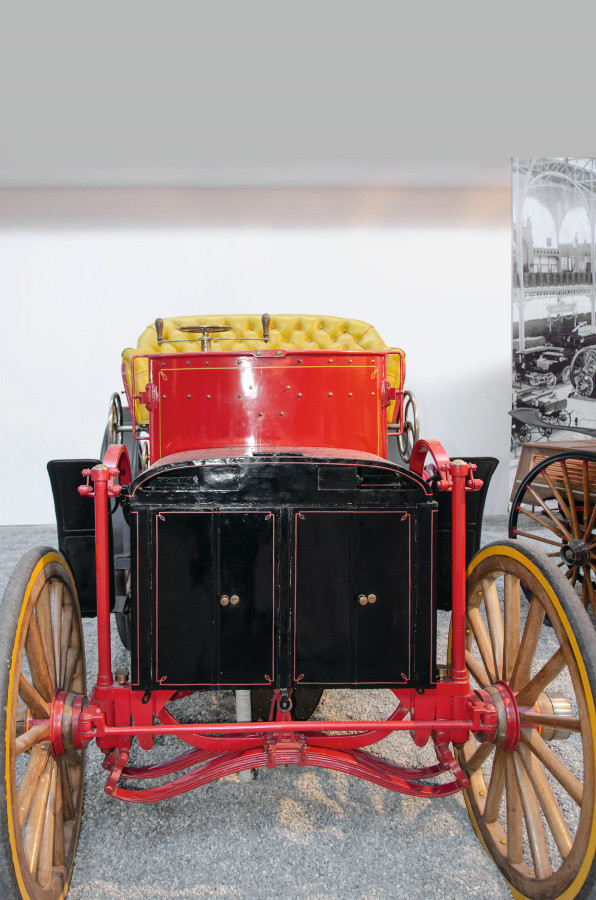 Menier Double Phaéton
Menier Double Phaéton
Still a carriage or already an automobile? The technology says car. This gem has two engines with two cylinders each and four gears. Each gear had its own pedal, which required a certain amount of skill on the part of the driver
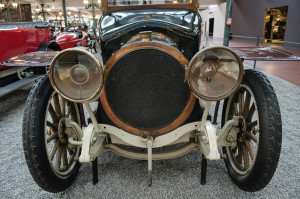 Delaunay-Belleville, type HB6
Delaunay-Belleville, type HB6
Before the First World War, Delaunay-Belleville cars played in the premier league. Royal families were among those supplied, and Tsar Nicholas II was an admirer of this type HB6. A six-cylinder engine accelerated it to 70 km/hToday,40 people work on the former spinning mill site again. A modern museum with a concept has now emerged from the makeshift facility of the 1970s: There is a section for cars from the 19th century to the First World War, when automobiles still looked like horse-drawn carriages. The next section is dedicated to cars from the 1920s to the end of the Second World War and finally the 1950s to the present day, although there are no current models on display. There is a special engine section and part of the exhibition is reserved exclusively for racing. The mix of exhibits has also changed. Today, it is not only the high-priced racing cars that are on display, but also the classics for everyone: the Ford T-Model, the VW Beetle, the Fiat 500 or the legendary duck, the 2 CV. There are only a few motorcycles, but every now and then there is a temporary special show with a different theme.
A restaurant with typical Alsatian cuisine, a cozy bar and a store for merchandising articles round off the experience. More than 180000 people visit the Schlumpf Collection every year. The fact that the world's largest automobile museum is located in the comparatively small town of Mulhouse is certainly a nice footnote to history. With around 15,000 employees, the Peugeot Citroën plant located here is the largest employer in the entire tri-border region of Germany, France and Switzerland. It attracts thousands of commuters from neighboring countries every day.
What is going on in the museum's Atelier de Restauration? The work on the Citroën B2 and the Bugatti 32 will soon be completed. These cars will then return to the exhibition. The Royale Esders will still need some time - the mechanics have discovered a defect in one of the cylinders. Then routine will return and the workshop staff will once again devote themselves to all the wonderful paintwork, chrome and brass surfaces of the exhibits. And an activity that is one of the most popular parts of their daily work. Every classic car that is ready to drive is moved at least once a year. A small Motodrom about 800 meters long is available on the museum grounds for this purpose.

